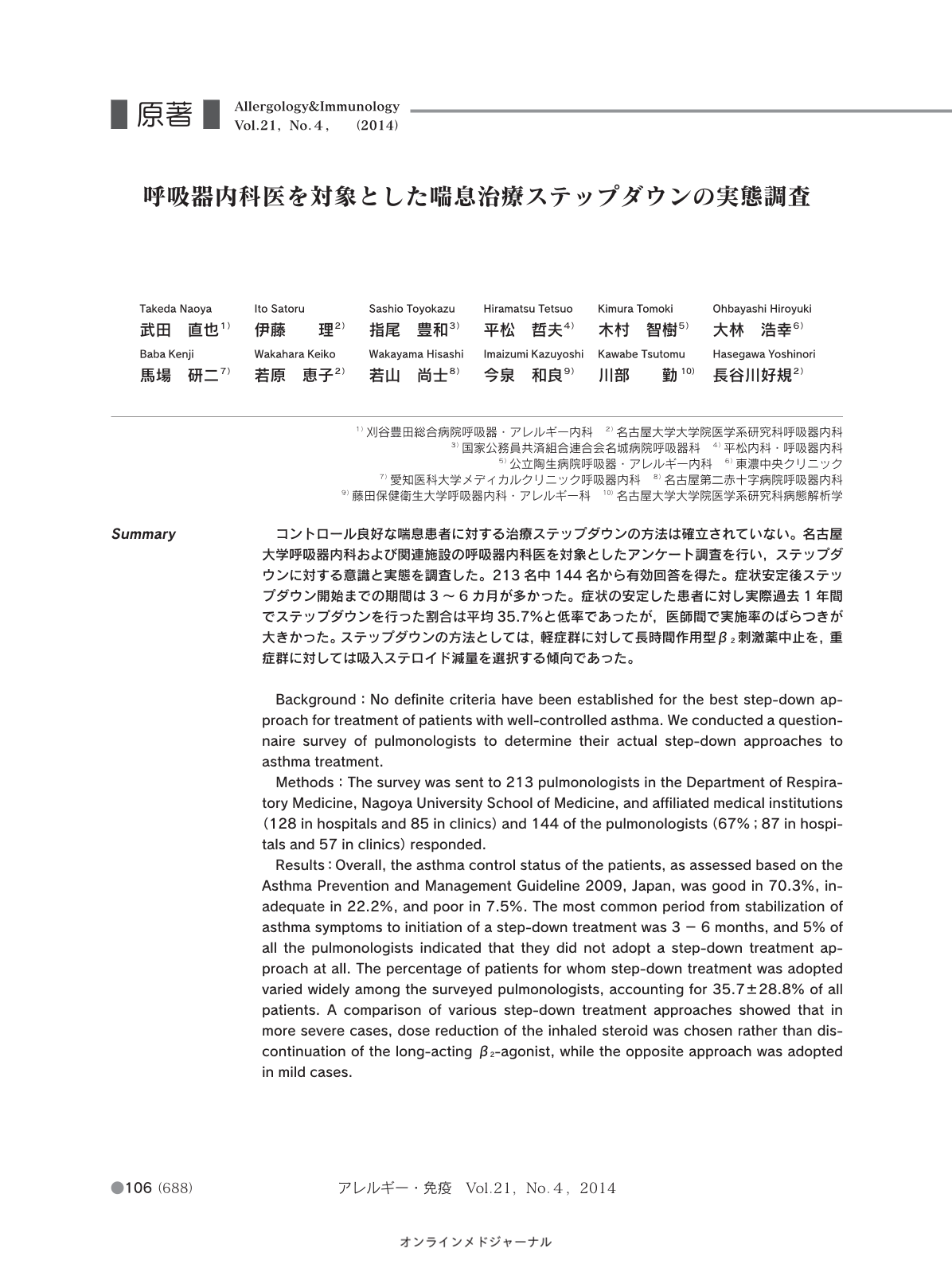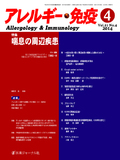- 有料閲覧
- 文献概要
- 1ページ目
- 参考文献
コントロール良好な喘息患者に対する治療ステップダウンの方法は確立されていない。名古屋大学呼吸器内科および関連施設の呼吸器内科医を対象としたアンケート調査を行い,ステップダウンに対する意識と実態を調査した。213名中144名から有効回答を得た。症状安定後ステップダウン開始までの期間は3~6カ月が多かった。症状の安定した患者に対し実際過去1年間でステップダウンを行った割合は平均35.7%と低率であったが,医師間で実施率のばらつきが大きかった。ステップダウンの方法としては,軽症群に対して長時間作用型β2刺激薬中止を,重症群に対しては吸入ステロイド減量を選択する傾向であった。
Background:No definite criteria have been established for the best step-down approach for treatment of patients with well-controlled asthma. We conducted a questionnaire survey of pulmonologists to determine their actual step-down approaches to asthma treatment. Methods:The survey was sent to 213 pulmonologists in the Department of Respiratory Medicine, Nagoya University School of Medicine, and affiliated medical institutions(128 in hospitals and 85 in clinics)and 144 of the pulmonologists(67%;87 in hospitals and 57 in clinics)responded. Results:Overall, the asthma control status of the patients, as assessed based on the Asthma Prevention and Management Guideline 2009, Japan, was good in 70.3%, inadequate in 22.2%, and poor in 7.5%. The most common period from stabilization of asthma symptoms to initiation of a step-down treatment was 3-6 months, and 5% of all the pulmonologists indicated that they did not adopt a step-down treatment approach at all. The percentage of patients for whom step-down treatment was adopted varied widely among the surveyed pulmonologists, accounting for 35.7±28.8% of all patients. A comparison of various step-down treatment approaches showed that in more severe cases, dose reduction of the inhaled steroid was chosen rather than discontinuation of the long-acting β2-agonist, while the opposite approach was adopted in mild cases. Conclusion:More evidence is necessary regarding the best step-down approach in treating well-controlled asthma.



